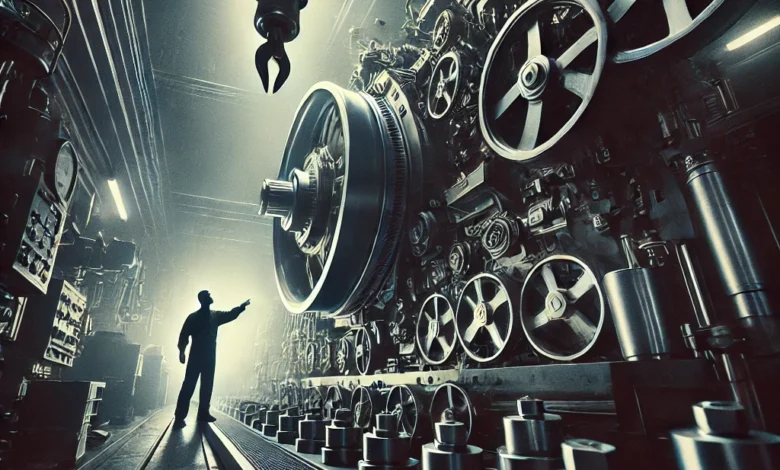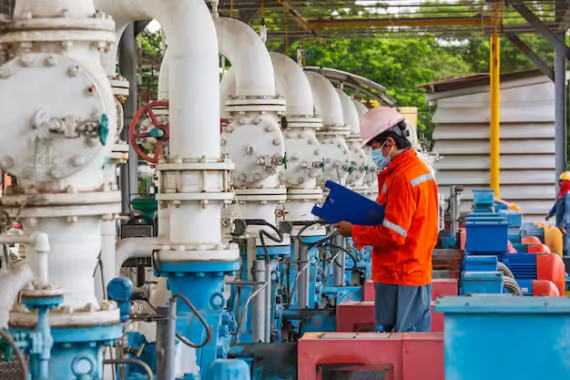Lakeshore Industrial M46 Inspection: A Detailed Guide

Inspections are crucial for maintaining industrial equipment, and the Lakeshore Industrial M46 inspections model is no exception. Regular inspections help ensure that the equipment runs smoothly and safely. They also play a vital role in preventing costly repairs and downtime. By following a structured inspection process, operators can identify potential issues early and take corrective actions to avoid accidents or failures. This article will guide you through the key aspects of M46 inspections, providing essential information and best practices to keep your equipment in top condition.
Understanding the importance of M46 inspections is fundamental for anyone involved in equipment maintenance. Regular checks not only enhance operational efficiency but also contribute to a safer workplace. As industrial environments can be complex and challenging, having a clear understanding of inspection procedures can significantly improve equipment reliability. In this guide, we will delve into the inspection process, from preparation and safety measures to the specific areas to focus on during an inspection.
Importance of Regular M46 Inspections
The Lakeshore Industrial M46 equipment is designed to handle heavy workloads and demanding tasks. However, over time, wear and tear can lead to various issues that affect performance. Regular inspections help identify these problems before they escalate. Here are some key reasons why M46 inspections are essential:
- Preventive Maintenance: Regular inspections allow for preventive maintenance, ensuring that minor issues are addressed before they turn into major problems. This proactive approach can save time and money in the long run.
- Safety Assurance: Safety is paramount in any industrial setting. Inspecting the M46 equipment helps to ensure that all components function correctly, reducing the risk of accidents or equipment failures that could harm personnel or damage property.
- Operational Efficiency: Equipment that is well-maintained performs better. Regular inspections can identify areas where efficiency can be improved, helping to enhance overall productivity.
- Cost Savings: By identifying potential issues early, companies can avoid costly repairs and unplanned downtime. Regular inspections contribute to a healthier bottom line by keeping equipment operational and reducing emergency repair costs.
Preparing for an M46 Inspection
Preparation is crucial for a successful inspection. Here are some steps to ensure you are ready:
- Gather Necessary Tools: Before starting an inspection, gather all the tools and equipment you will need. This includes basic hand tools, safety gear, and any inspection checklists provided by the manufacturer.
- Review Previous Inspection Reports: Look over past inspection reports to understand any recurring issues and verify whether previous recommendations were implemented.
- Notify Staff: Inform all relevant personnel about the inspection schedule to ensure everyone is aware and prepared.
Safety Precautions
Safety should always be the top priority during inspections. Here are some essential safety precautions:
- Lockout/Tagout Procedures: Before inspecting any equipment, ensure that it is turned off and locked out to prevent accidental operation.
- Personal Protective Equipment (PPE): Wear appropriate PPE, including gloves, safety glasses, and hard hats. This equipment protects against potential hazards during the inspection.
- Work in Pairs: If possible, have another person present during the inspection. This practice can provide additional safety and support if something goes wrong.
Inspection Procedures
Once you are prepared and have ensured safety, you can begin the inspection. Here are some key areas to focus on:
- Visual Inspection: Start with a thorough visual inspection. Look for signs of wear, such as cracks, rust, or loose components. Pay special attention to high-stress areas and moving parts.
- Electrical Components: Inspect all electrical wiring and connections. Look for fraying, corrosion, or loose connections that could lead to equipment failure.
- Hydraulic System: Examine hoses and fittings for leaks and ensure hydraulic fluid levels are adequate. Contaminated or low fluid can significantly impact performance.
- Mechanical Components: Check lubrication points and ensure all parts are adequately greased. Inspect bearings and gears for wear, and replace any components that show significant deterioration.
- Operational Testing: After completing the inspections, run the equipment to test its operational efficiency. Listen for unusual noises and monitor vibrations to identify potential issues.
Documentation and Reporting
Thorough documentation is critical for tracking the condition of the M46 equipment over time. Record all findings from the inspection, noting any issues identified and actions taken. Maintain a detailed log of inspections to monitor trends and plan future maintenance activities.
Scheduling Regular Inspections
Establish a schedule for regular M46 inspections based on manufacturer guidelines and operational demands. By adhering to this schedule, you can stay ahead of potential problems and maintain peak performance.
Conclusion
In conclusion, regular inspections of Lakeshore Industrial M46 equipment are vital for maintaining its efficiency, safety, and longevity. By following a structured inspection process and adhering to best practices, operators can identify issues early and ensure that the equipment runs smoothly. The benefits of regular inspections extend beyond simply keeping the equipment operational; they contribute to a safer working environment, cost savings, and overall productivity.
Investing time and resources in M46 inspections pays off in the long run. Companies that prioritize these inspections are better positioned for success, as they can avoid costly downtime and enhance operational efficiency. By staying informed about industry best practices and continuously improving inspection processes, you can ensure that your Lakeshore Industrial M46 equipment remains in excellent condition for years to come.
FAQs
Q: What is the purpose of an M46 inspection?
A: The purpose of an M46 inspection is to ensure the equipment operates safely and efficiently, identify potential issues early, and maintain optimal performance.
Q: How often should M46 inspections be conducted?
A: Inspections should be conducted regularly based on manufacturer guidelines and the specific operational demands of your facility.
Q: What safety measures should be taken during an inspection?
A: Safety measures include locking out the equipment, wearing appropriate personal protective equipment (PPE), and working with a partner when possible.
Q: What areas should be inspected on the M46 equipment?
A: Key areas to inspect include electrical components, hydraulic systems, mechanical parts, and overall operational efficiency.
Q: Can technology assist in M46 inspections?
A: Yes, technology can enhance inspections through software and mobile apps that streamline processes and improve reporting capabilities.




